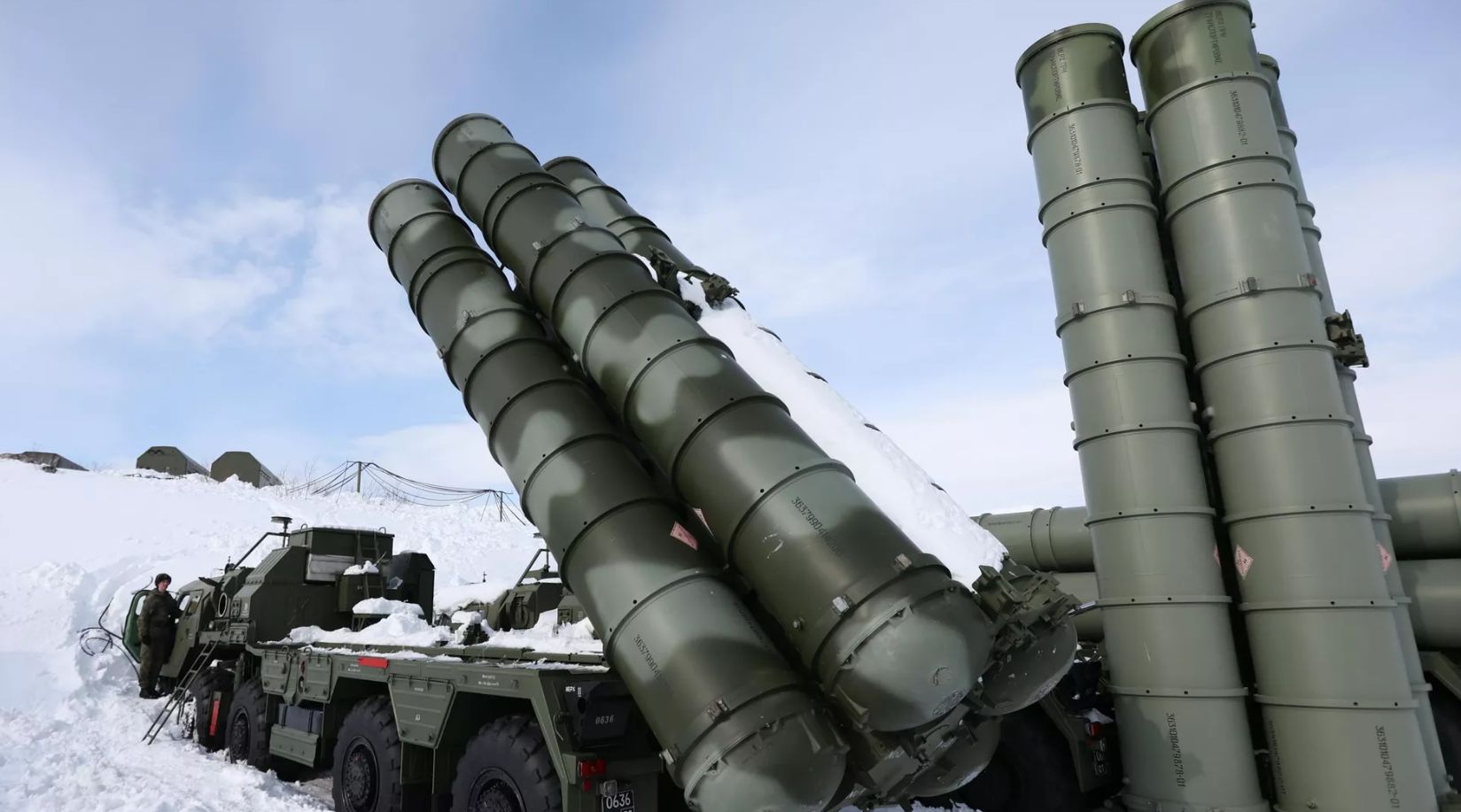In a stunning revelation, Russian officials claim they have used S-400 Triumph surface-to-air missile (SAM) system in coordination with their A-50 Airborne Warning and Control System (AWACS) to shoot down a Ukrainian combat jet.
Hypersonic-Armed Russian MiG-31 Fighters, Escorted By Su-27 Flankers, Ready For Black Sea Patrols
A report in TASS quoting an unidentified Russian said the fusion worked perfectly and led to the downing of at least one Ukrainian fighter. While the information in the story could not be verified, and there was no official word from the Russian Ministry of Defense (RuMoD) at the time of filing this report, at the same time, there is little reason to doubt the claim.
Russia had long been wary of NATO and US special mission aircraft, the RC-135 Rivet, MQ-9 Reaper, and E-3C Sentry AWACS, flying in the Baltics and the Black Sea to gather electronic intelligence (ELINT) on Russia’s radar system frequencies and placements.
NATO air forces, too, had identified proficiency in Suppression/Destruction of Enemy Air Defense (SEAD/DEAD) missions as one of their thrust areas, prompting Russia to use the S-400 differently and minimize the chances of adversaries being able to find countermeasures.
Russian Officials’ Revealing Claim
TASS said the S-400 was used in “conjunction” with the A-50 AWACS in the ongoing Special Military Operation (SMO). “During the SVO, Russia used the S-400 Triumph air defense system in tandem with the A-50 long-range radar detection aircraft, which ensured the success of using the system against enemy aviation,” the report quoted the agency’s interlocutor.
“The S-400 air defense system was fired at its maximum range at targets that at the time of destruction were at an altitude of approximately 1,000 meters while new warheads of anti-aircraft guided missiles were used.”
Another TASS report also quoted Defense Minister Sergei Shoigu as interacting with troops and making a remark about massive Ukrainian UAV losses over the last week. “We shot down 24 aircraft in 5 days,” Shoigu said while visiting the Vostok Group of Forces in Ukraine’s east. It is unclear if one of these downed Ukrainian planes is a casualty of the A50-S400 team.

Russia Reduced Chances Of Anti-S400 Countermeasures
Harvester, a handle on X (formerly Twitter), said many of the shoot-downs “took place away from the front.” “Rumor has it that Su-57 was used with some new missile,” he added.
He, too, commented on the TASS report, saying the S-400 and A-50 AWACS teaming enabled an arrangement where the information could be “directly” transmitted to the missile so that the adversary essentially does not even suspect that the missile is targeting it.
This is because an advanced system like the S-400 uses sophisticated surveillance and tracking radars with powerful frequency emissions that can trigger Radar Warning Receivers (RWR) on the aircraft.
It also risks revealing its radar-gathering frequencies. It wouldn’t be possible for the S-400’s tracking radar to operate in ‘war reserve’ mode while trying to engage targets at the most extended possible ranges.
War reserve mode, also called the ‘training frequency,’ hides its characteristics like ‘pulse width’ etc., which are used to analyze its radar signature.
E-3 Sentry AWACS and the RC-135 Rivet are patrolling outside Ukraine’s western, northern borders and skirting Belarus’s far western boundary up to the Baltics just outside Russian airspace. Activating its full tracking ability is risky, which would have led to the decision to experiment with the S400-A50 pairing.
Tactics & Procedures
A reasonable guess can be made about the adopted tactical procedure to effect the initial cueing and firing. The missile fired could be the 40N6E missile with the most extended reach of 400 kilometers. The TASS report claims the S-400 “was fired at its maximum range.” One of the two approaches must be adopted.
- The missile is fired in a ‘lock on after launch’ mode. Guidance and targeting data would be received in the ‘mid-course’ phase from the airborne A-50 and stored in the missile’s navigation system. Fusing the terminal stage seeker and the navigation system would do the rest.
- The A-50 and the S-400 crews communicate separately, pre-feeding the targeting coordinates in the missile. However, the efficacy and accuracy of this approach can be doubted since pre-installed target data for a moving aircraft would not be relevant since the plane will have changed direction.
The S-400 also uses the 40-kilometer-range 9M96E, 120-kilometer-range 9M96E2 and the250-kilometer-range 48N6. The above tactics are, however, technical speculations since little information is available from official Russian sources. The TASS report said it “does not have official confirmation of this information.”
What kind of aircraft the S-400 shot down also remains unclear, whether a large fighter bomber or a UAV. Shoigu did not offer a breakup of the 24 Ukrainian aircraft while making the statement at the Vostok grouping units near eastern Ukraine.
The only hint the TASS report provides is that the aircraft was flying at a height of 1,000 meters. This could be a Su-25 ground attack aircraft or a Mi-24 helicopter gunship. Ukrainian planes are usually forced to fly at lower altitudes to prevent being shot down by Russian Su-35S or Su-30SM permanently on patrol from Ukraine’s Russian-held territory. They are also under permanent threat from SAM systems like the S-300 and the Buk.
Not disclosing the make of the plane might also have an operational security (OPSEC) motive since the Ukrainians and the US, NATO, aware of the loss of Kyiv’s jets and the location of the shoot downs, can discern elementary information like the location of the S-400 battery. But it appears that one of the targets of two dozen downed Ukrainian aircraft has to be a victim of the S400-A50 fusion.
- The author can be reached at satamp@gmail.com
- Follow EurAsian Times on Google News